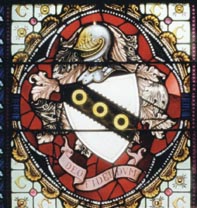
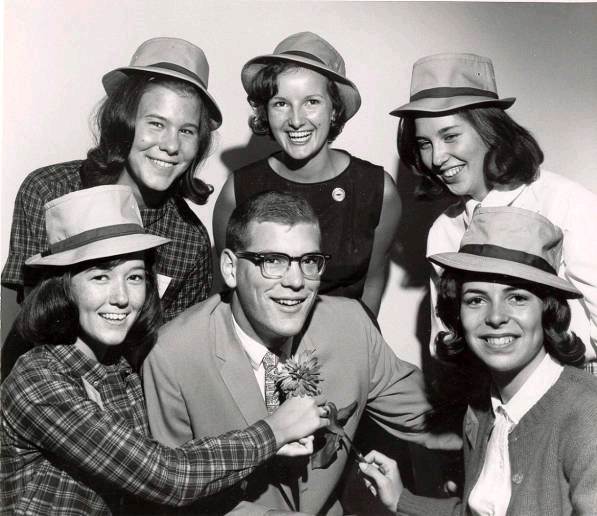
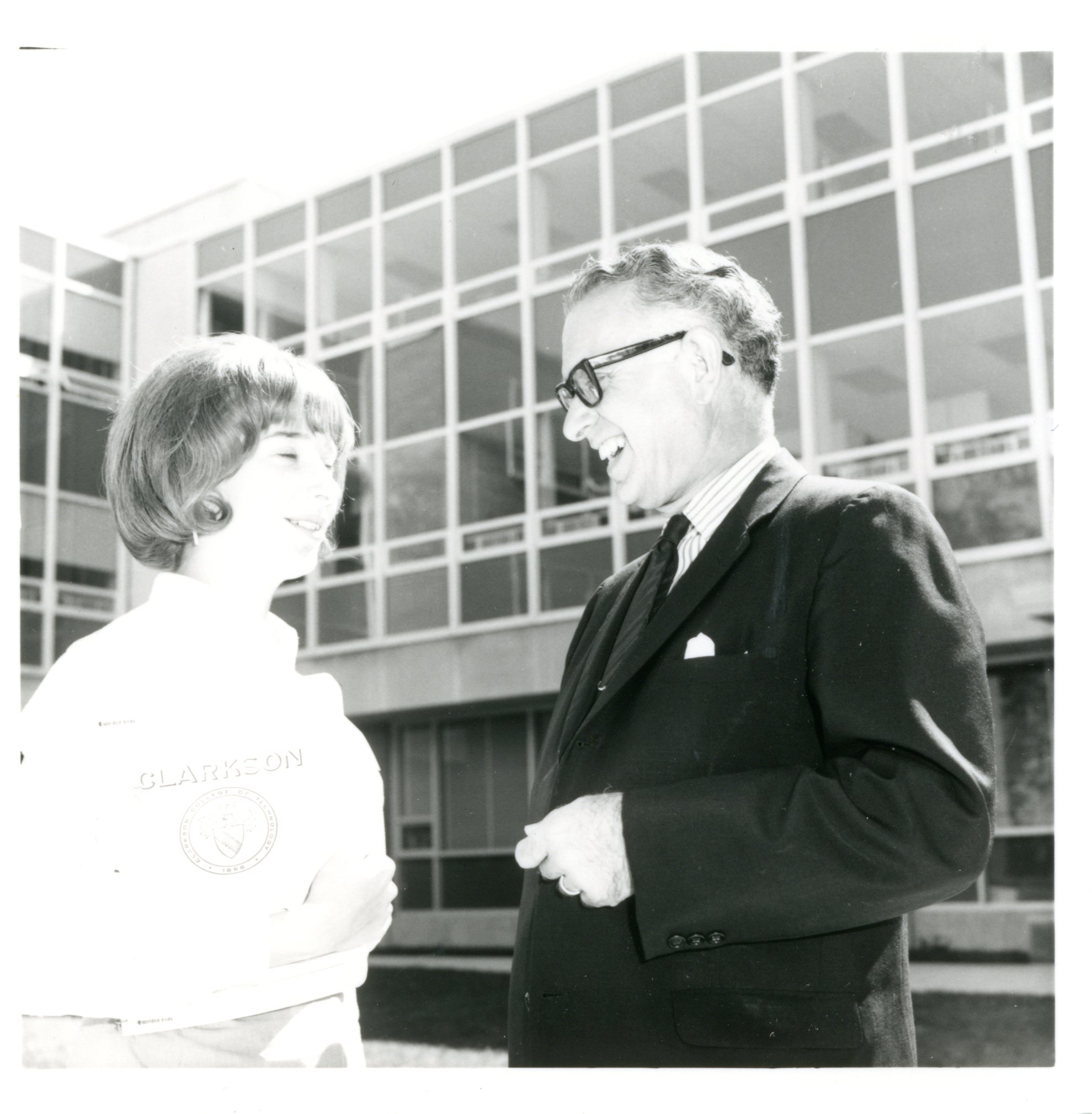
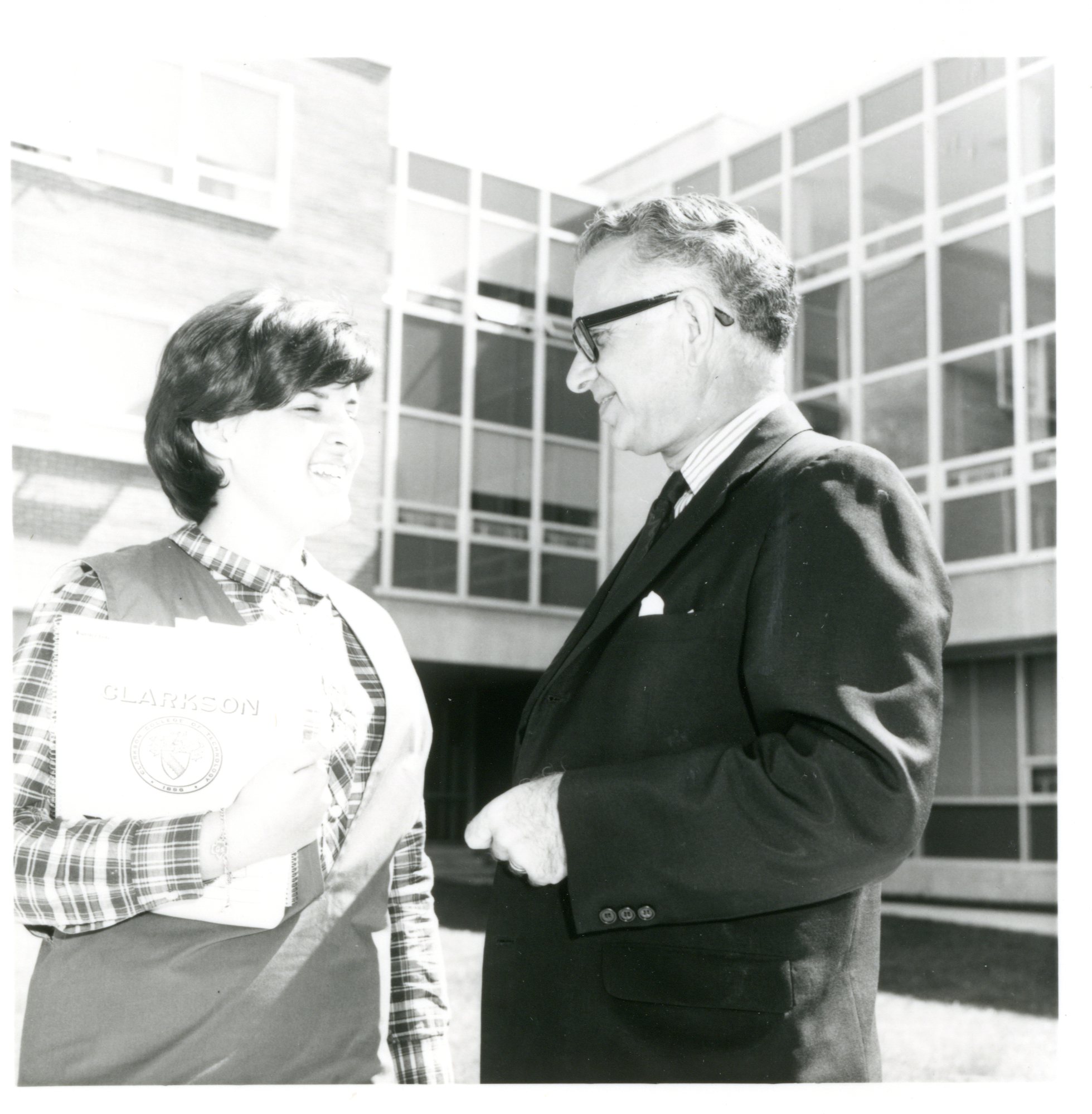
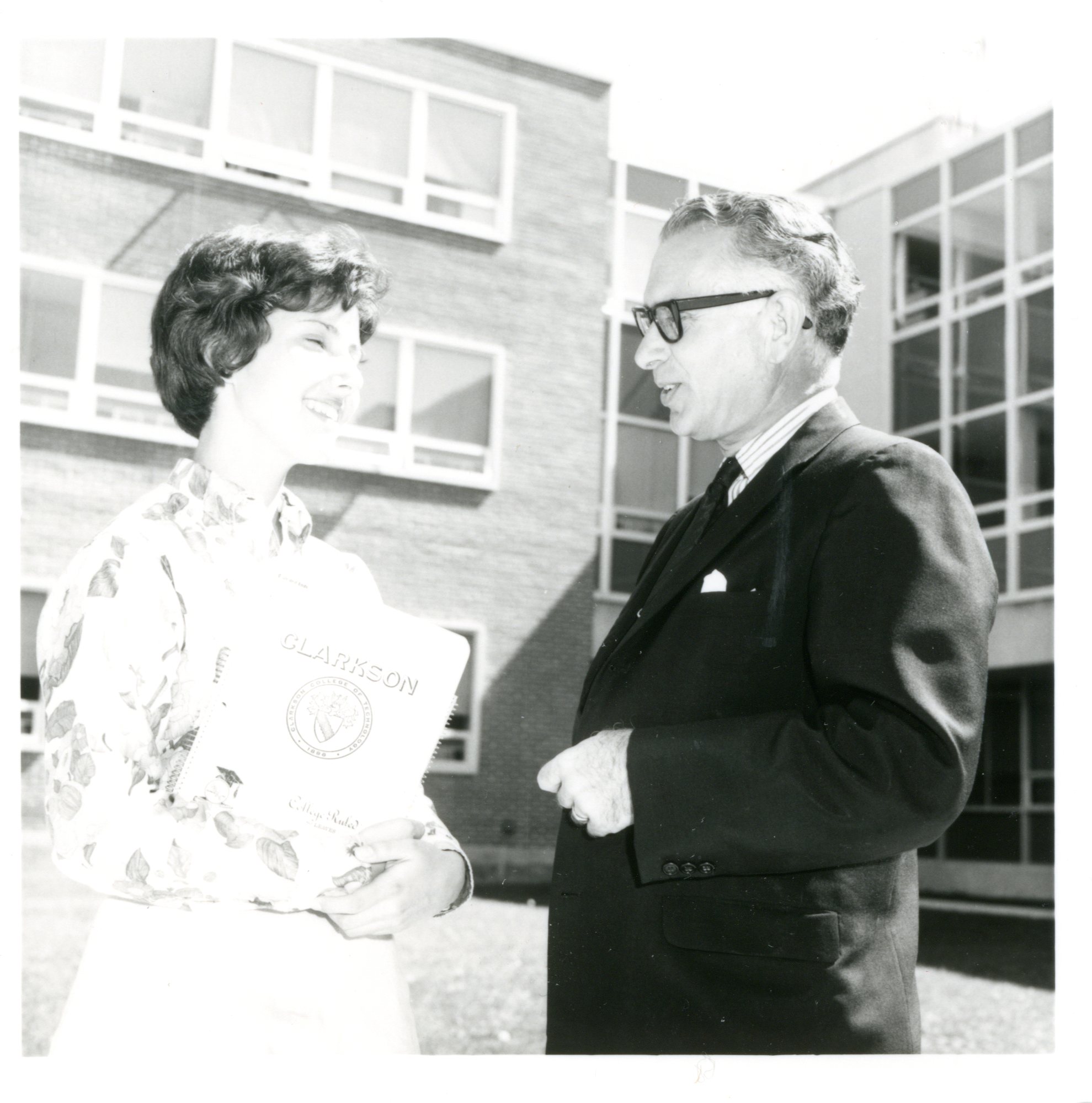
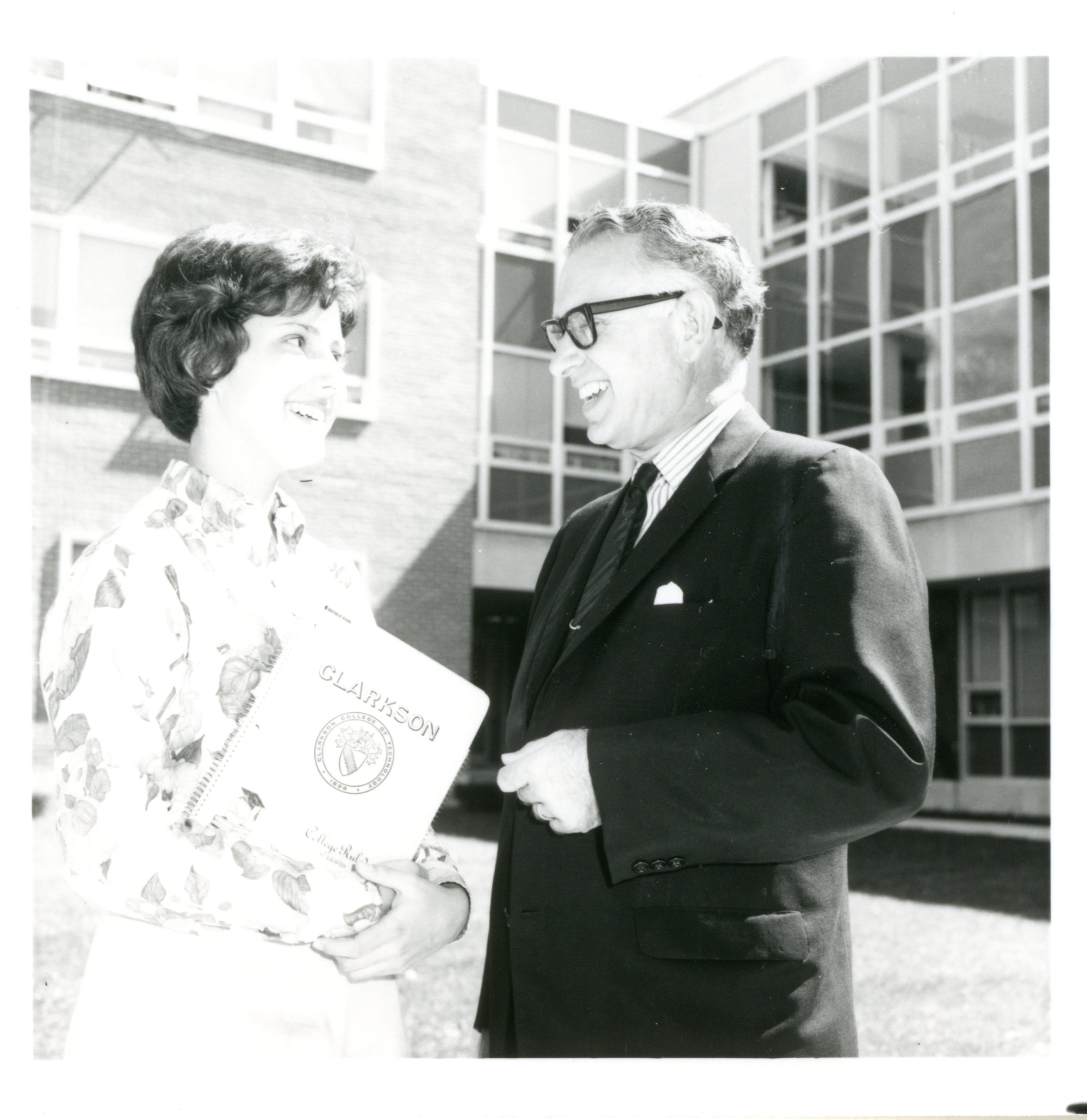
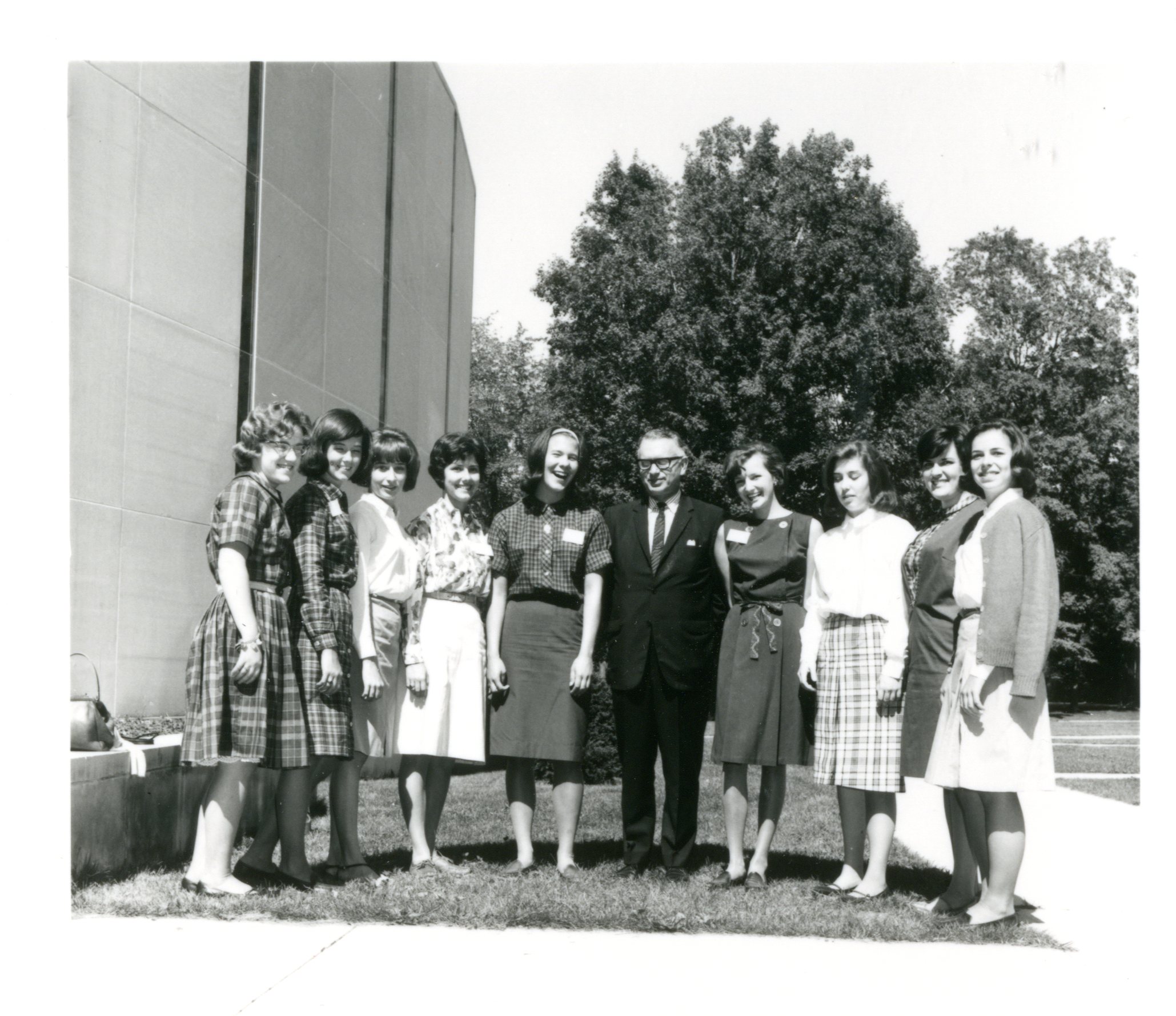
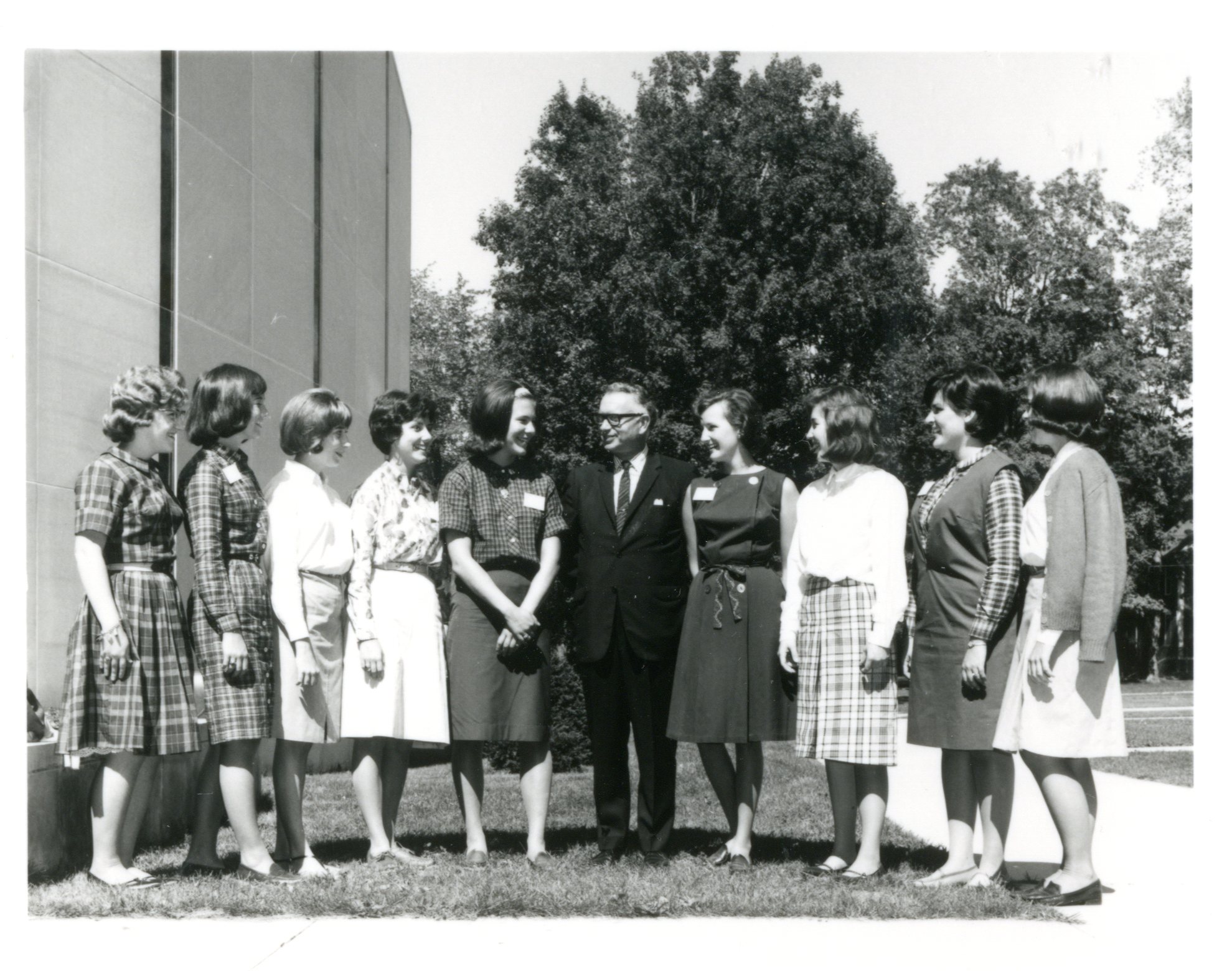
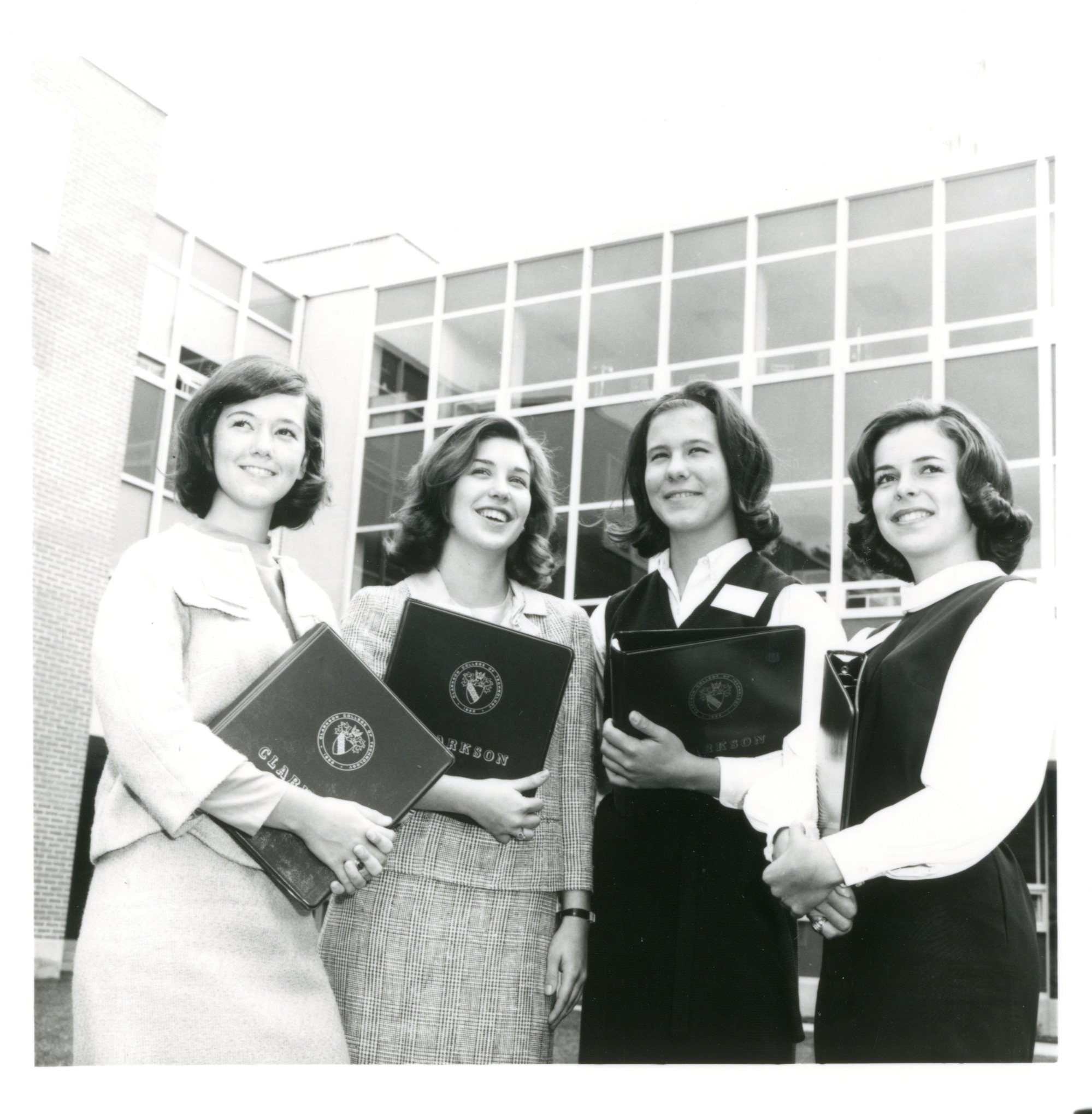
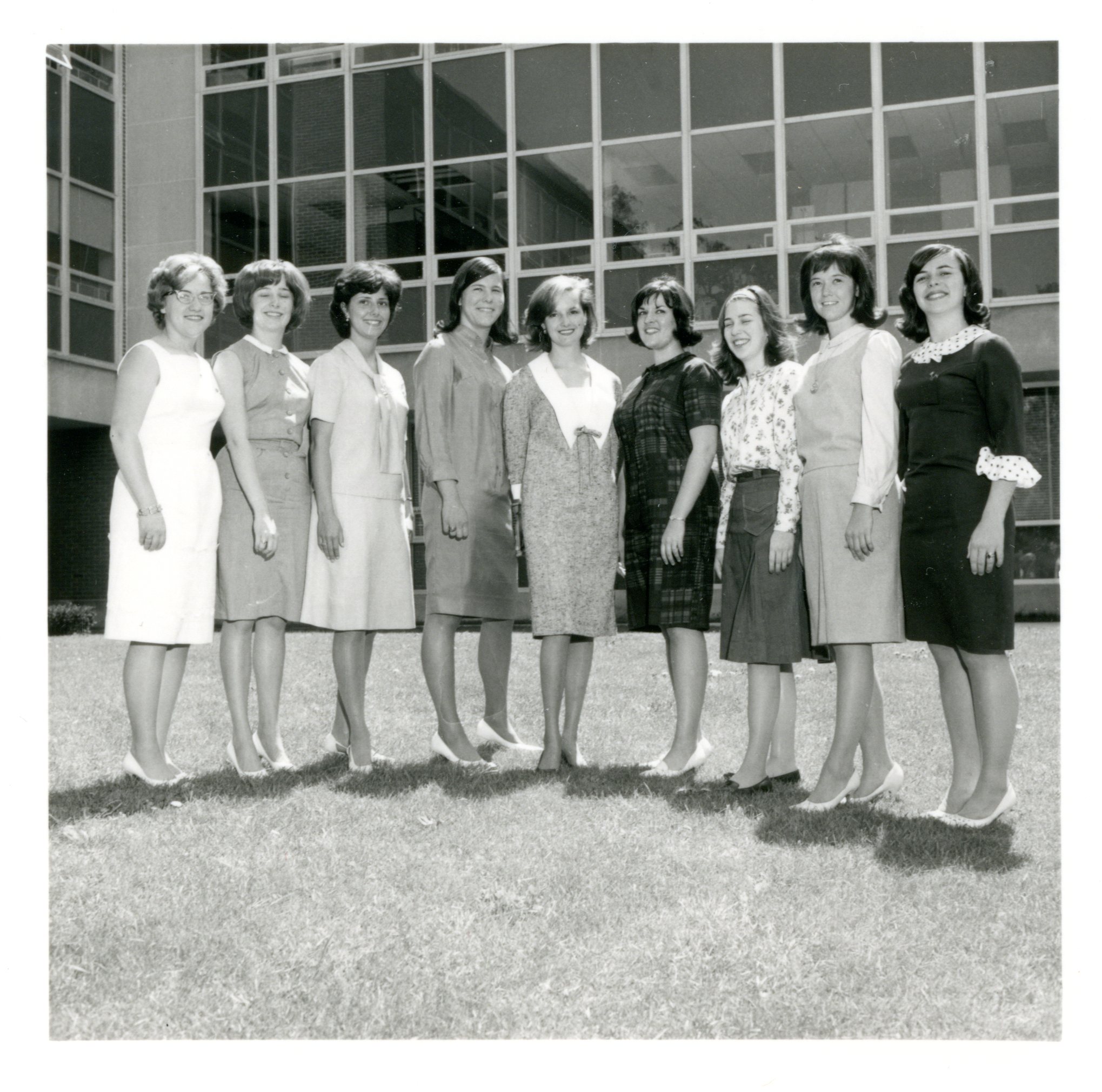
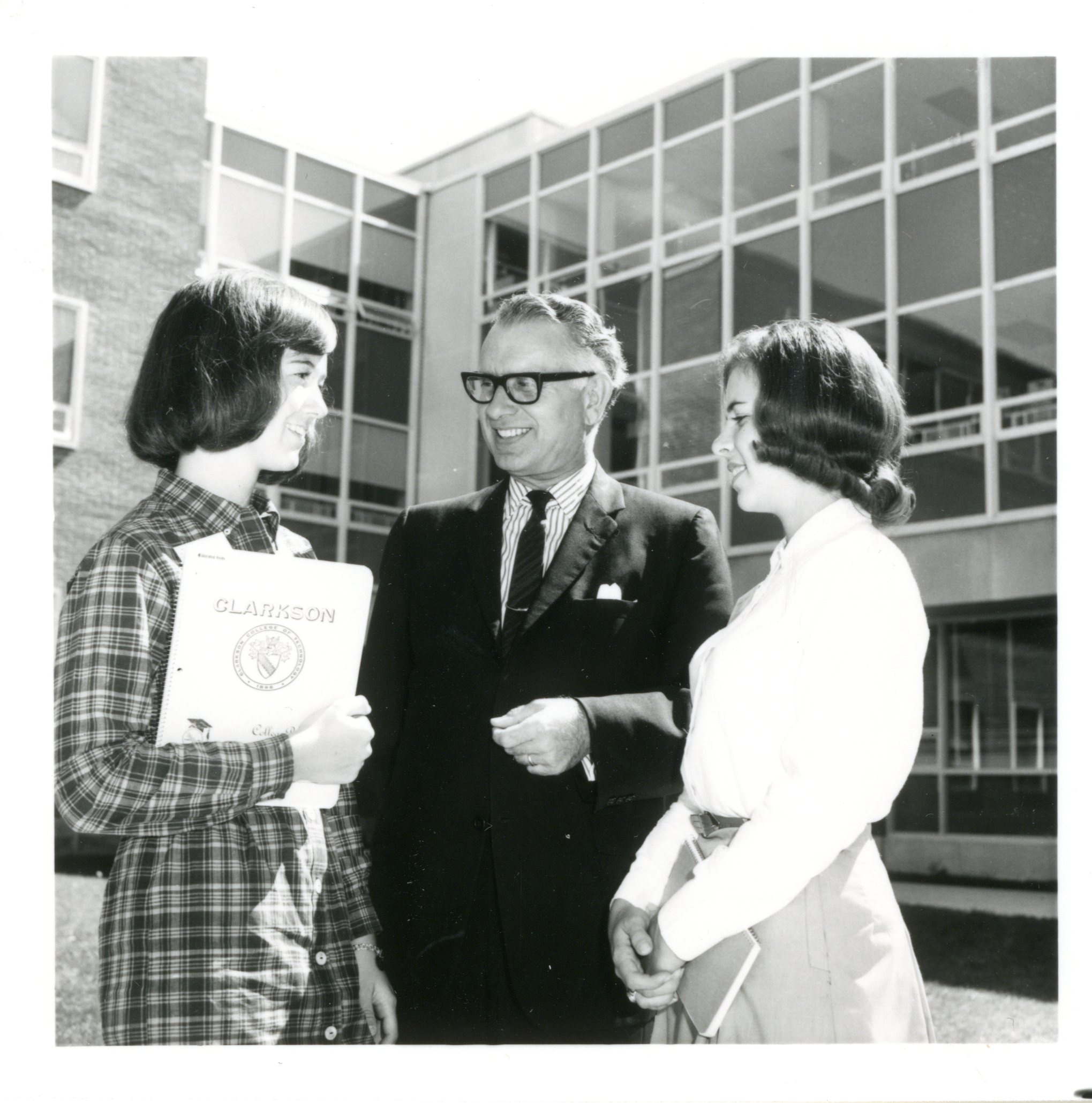
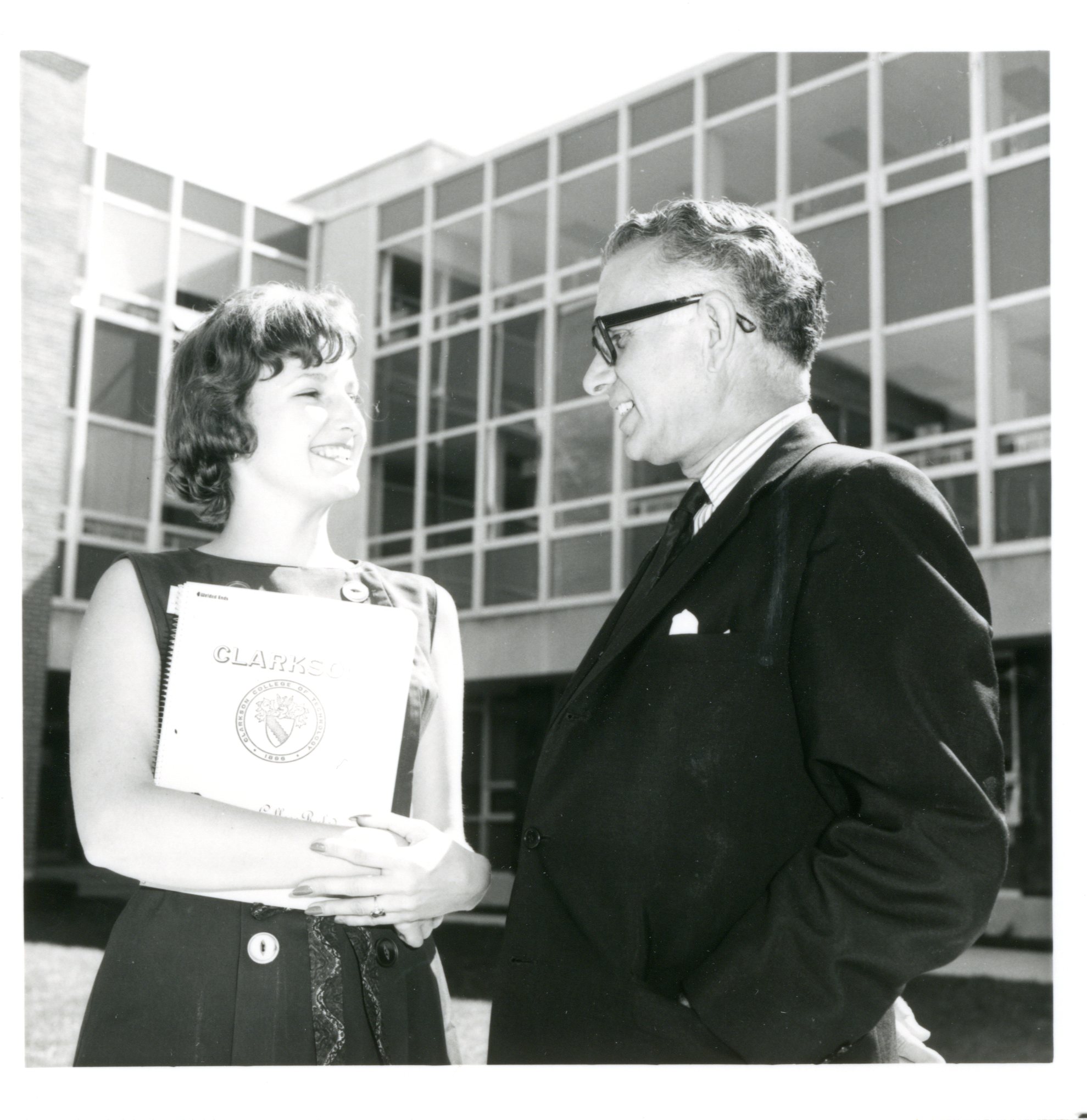
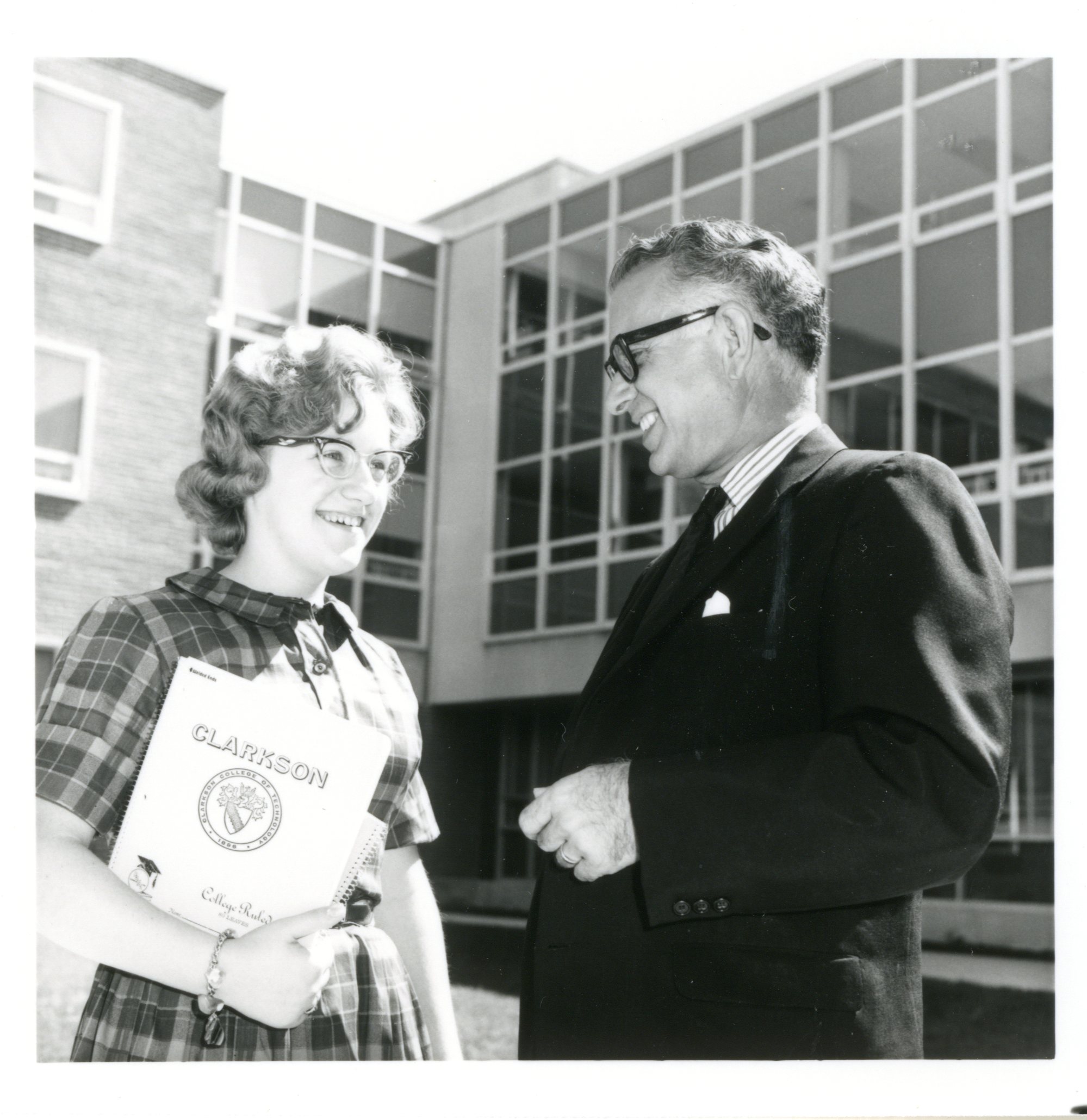
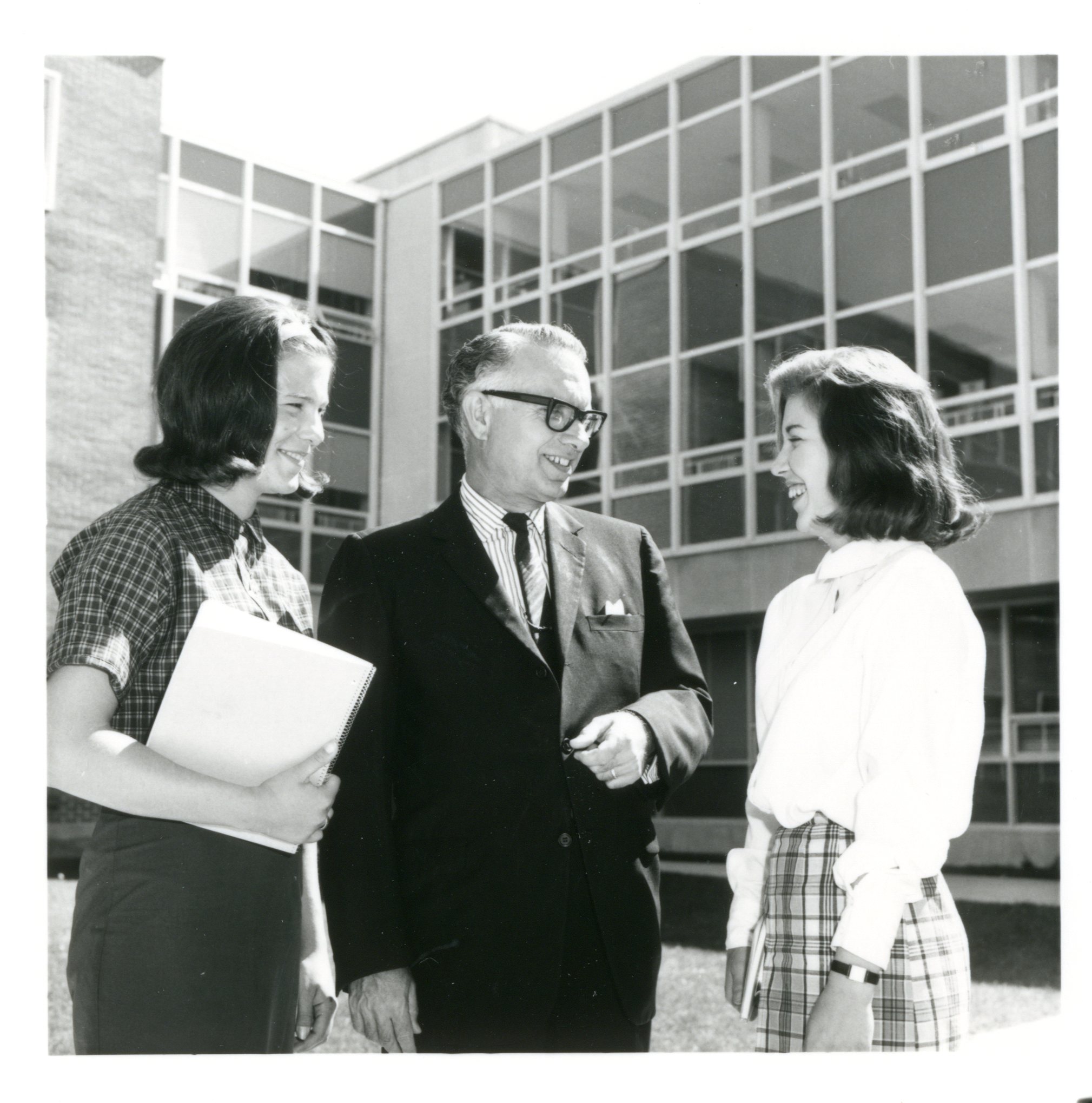
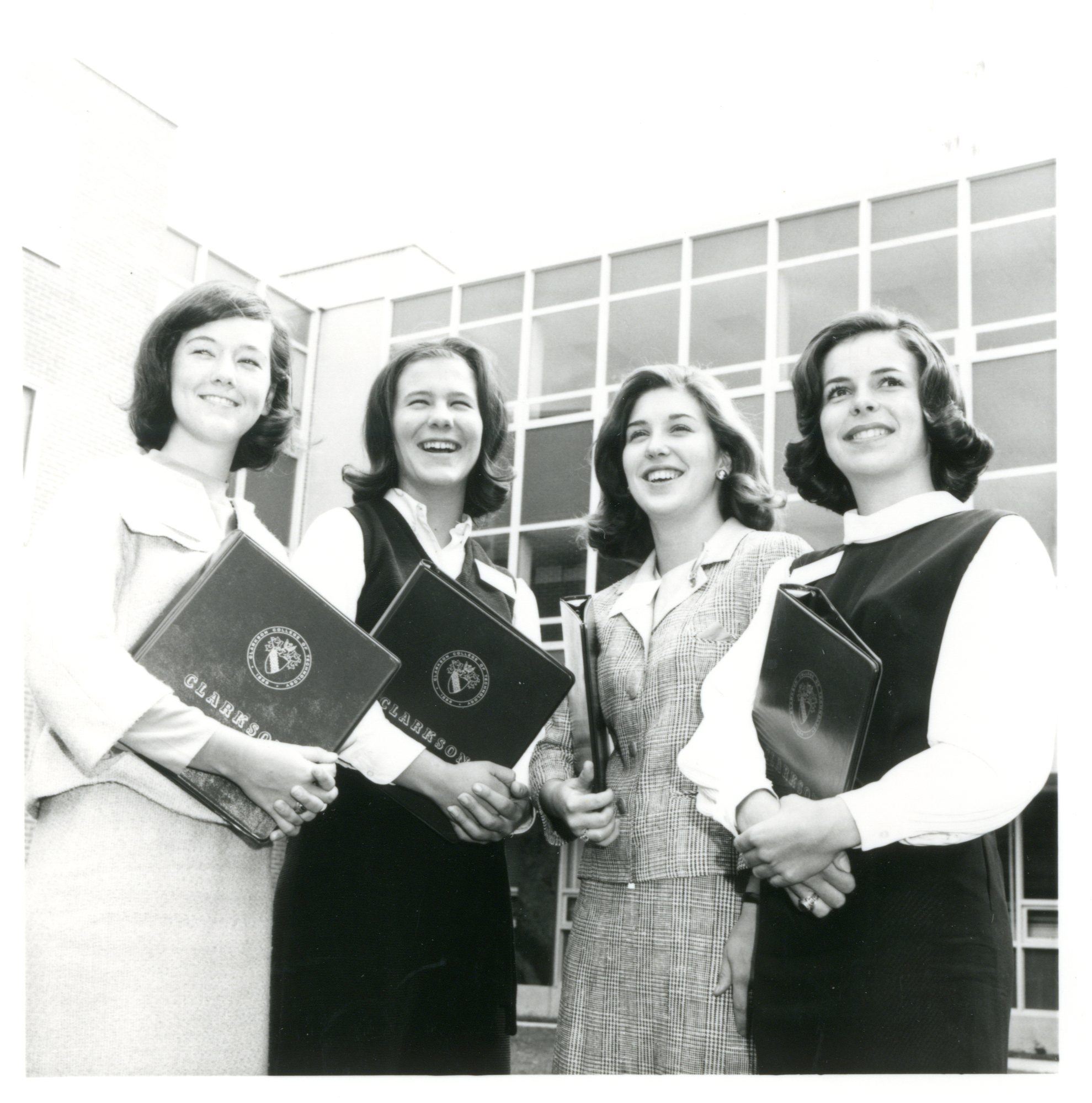
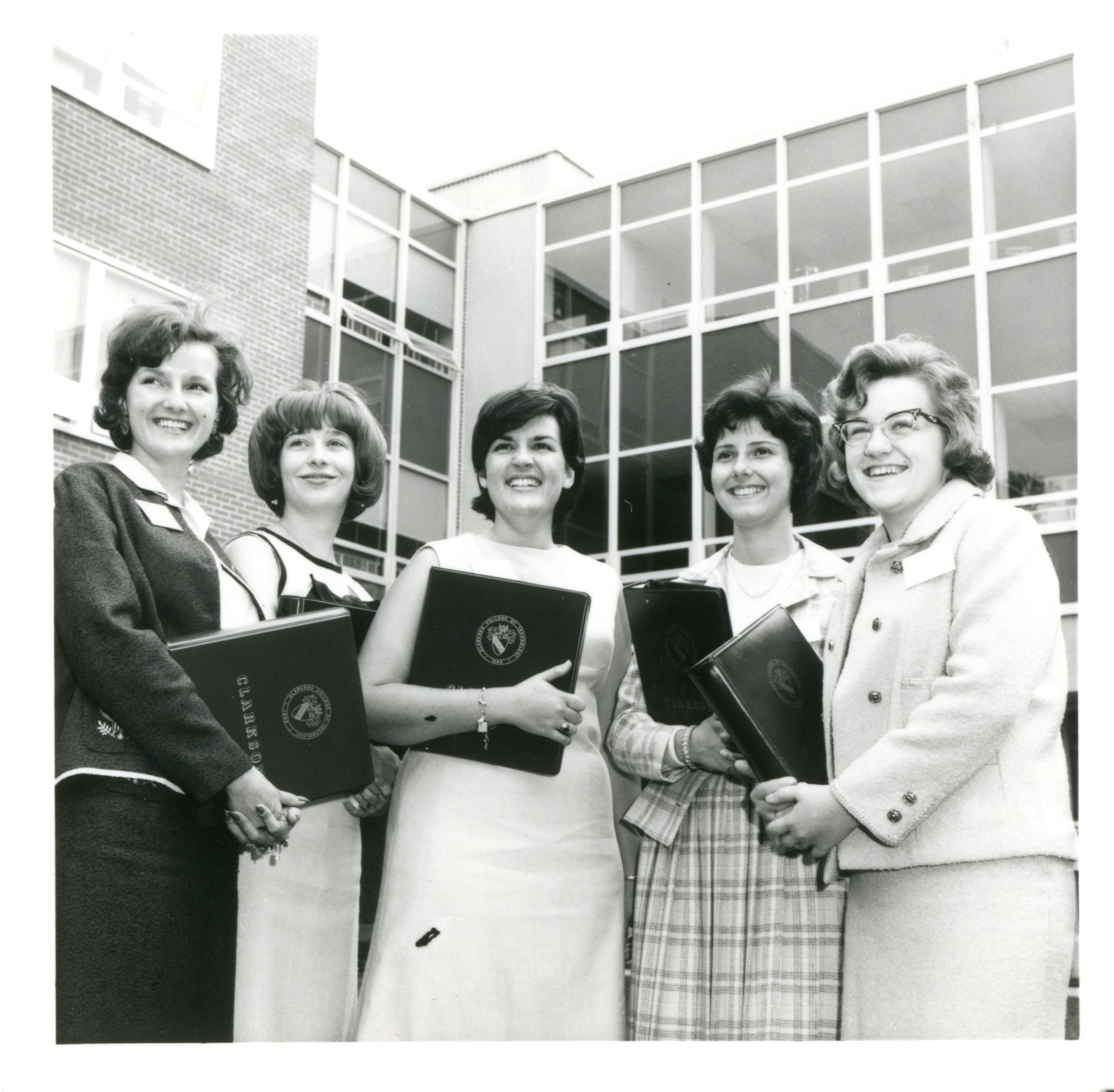
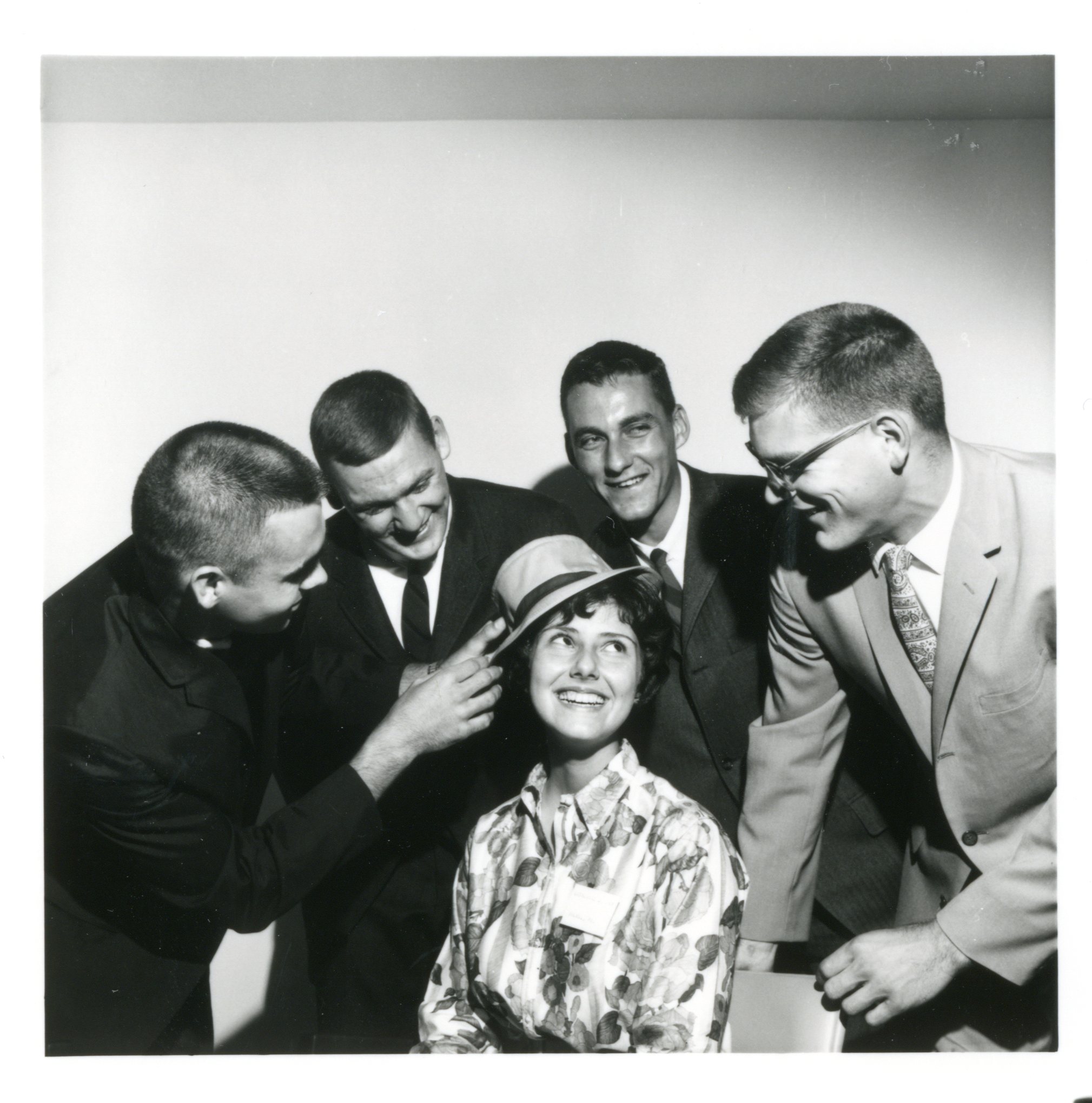
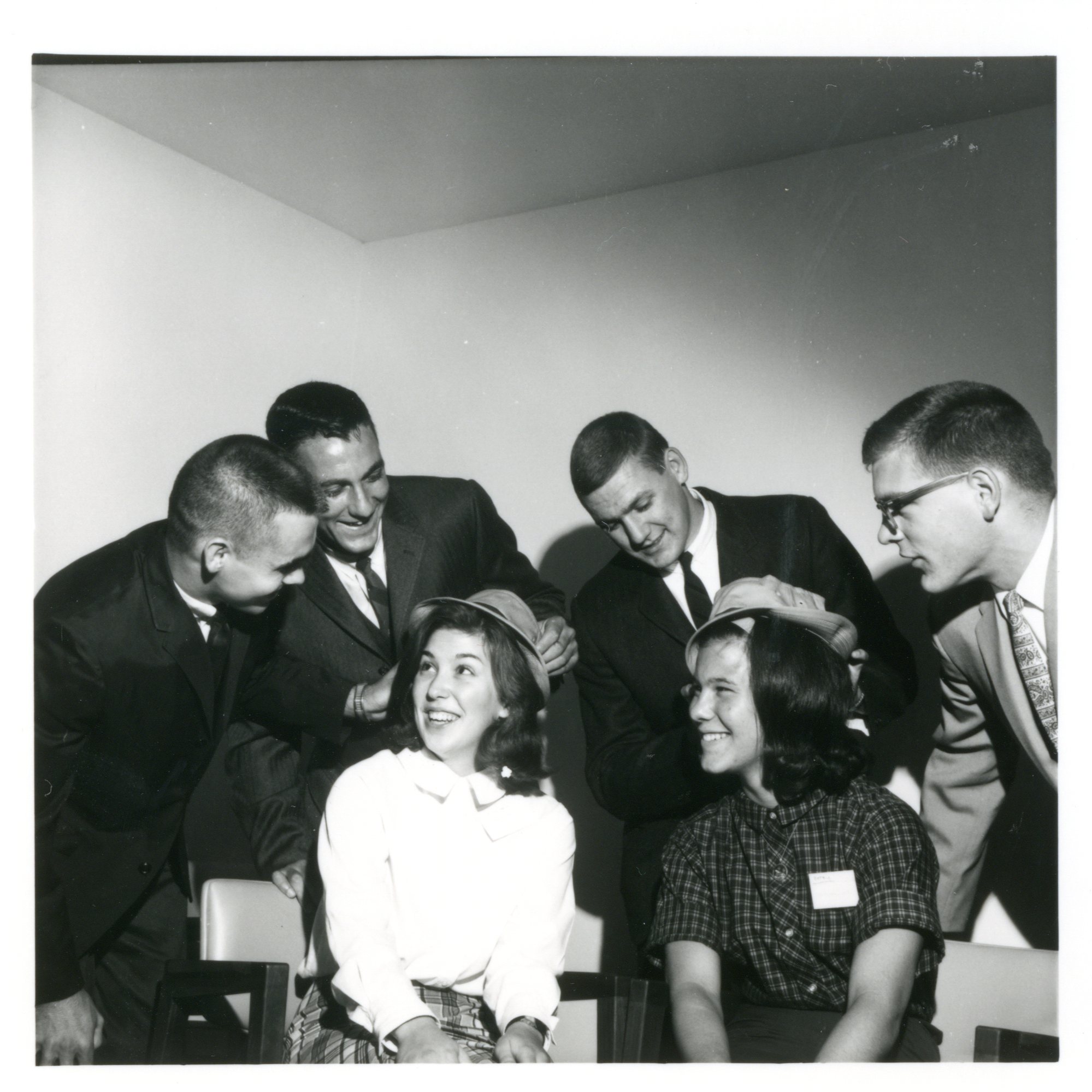
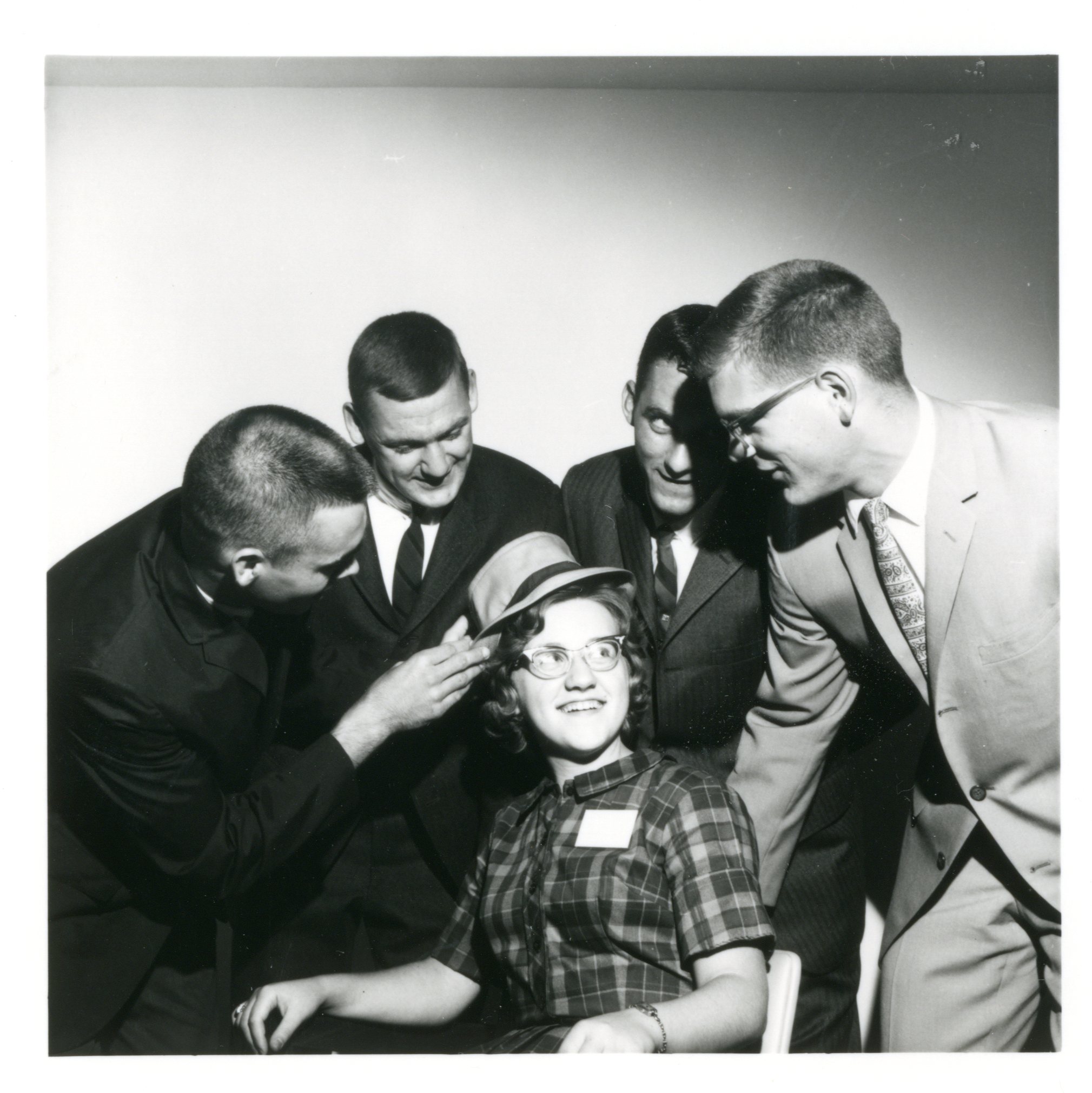
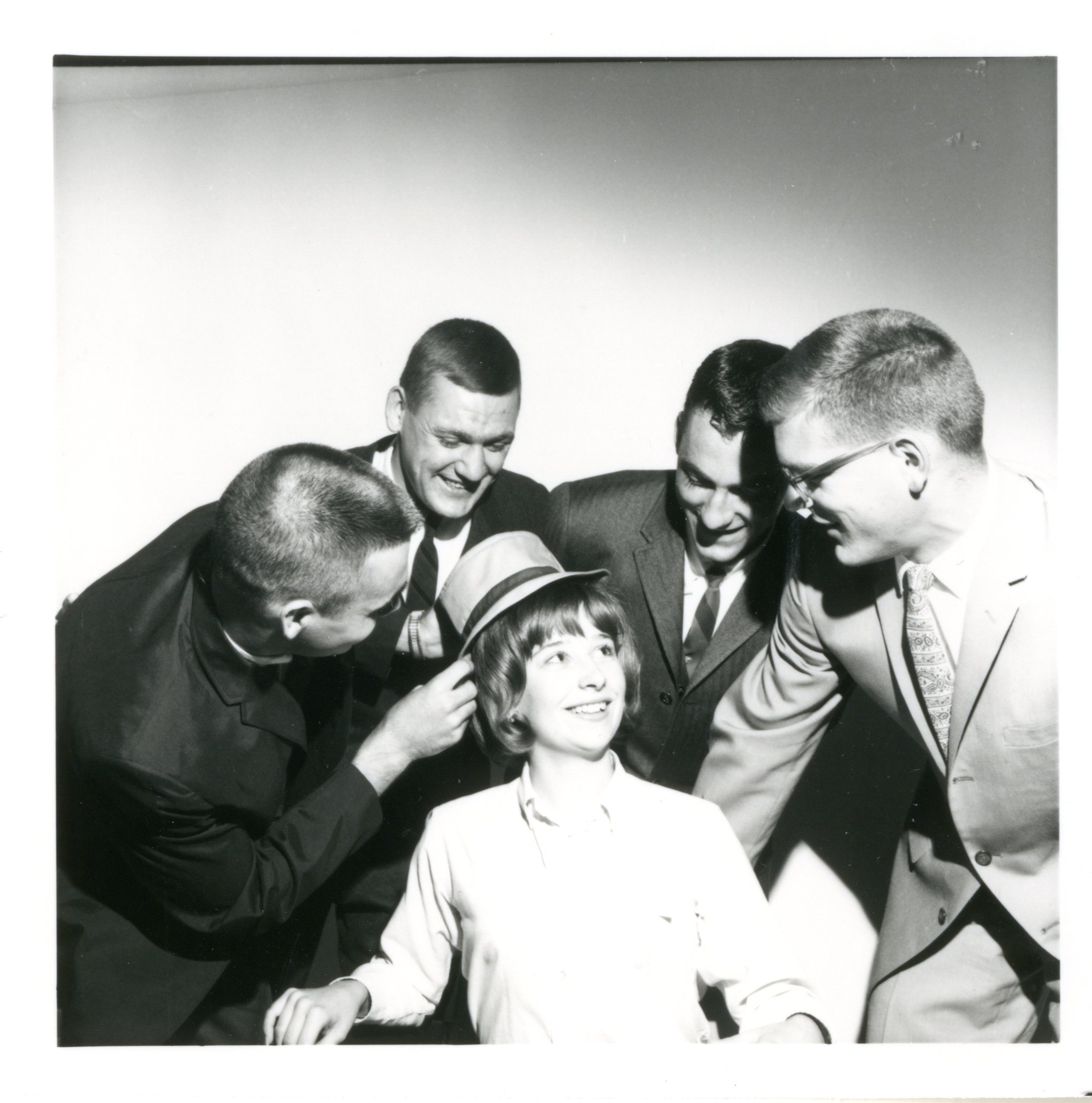
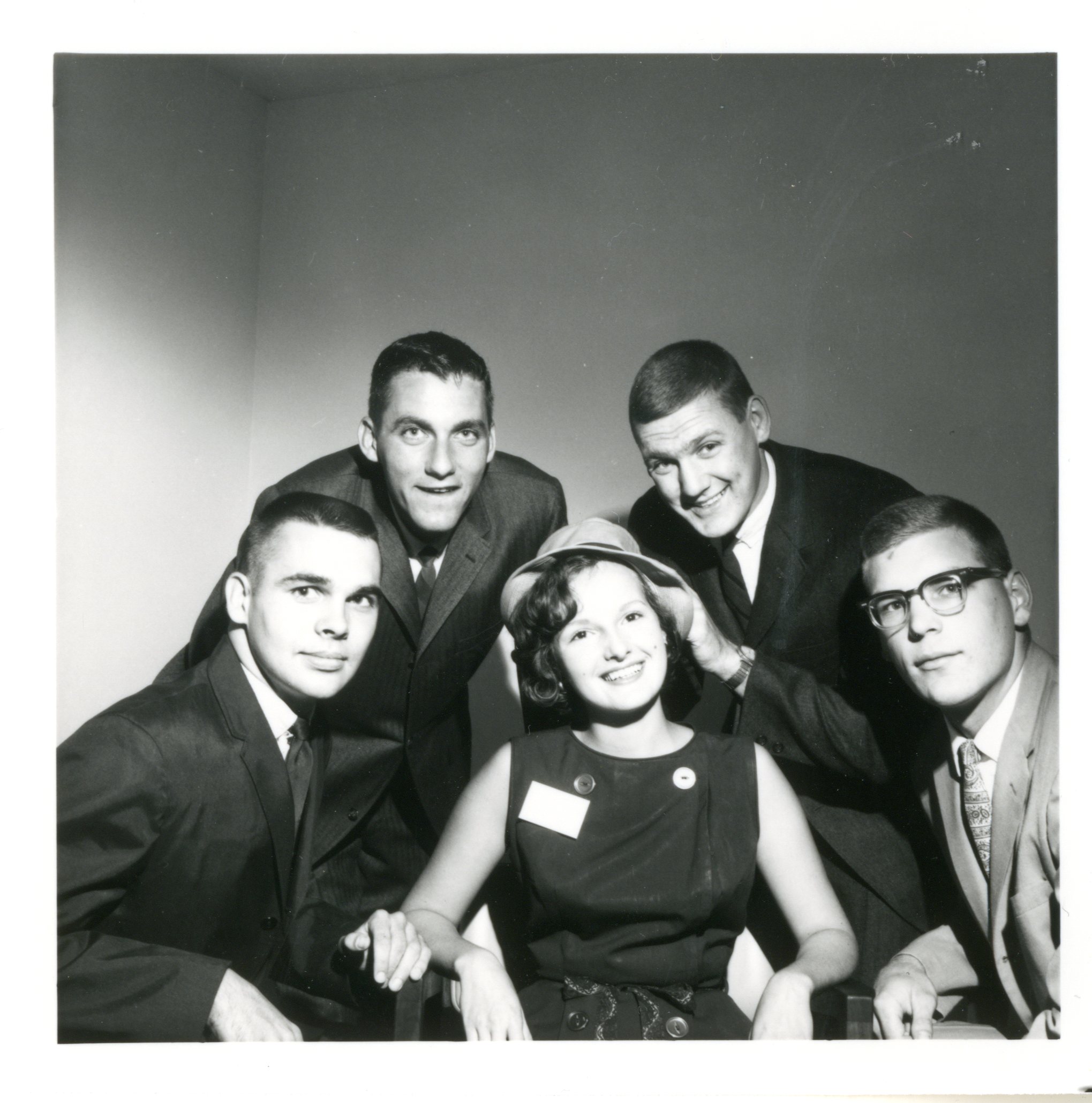
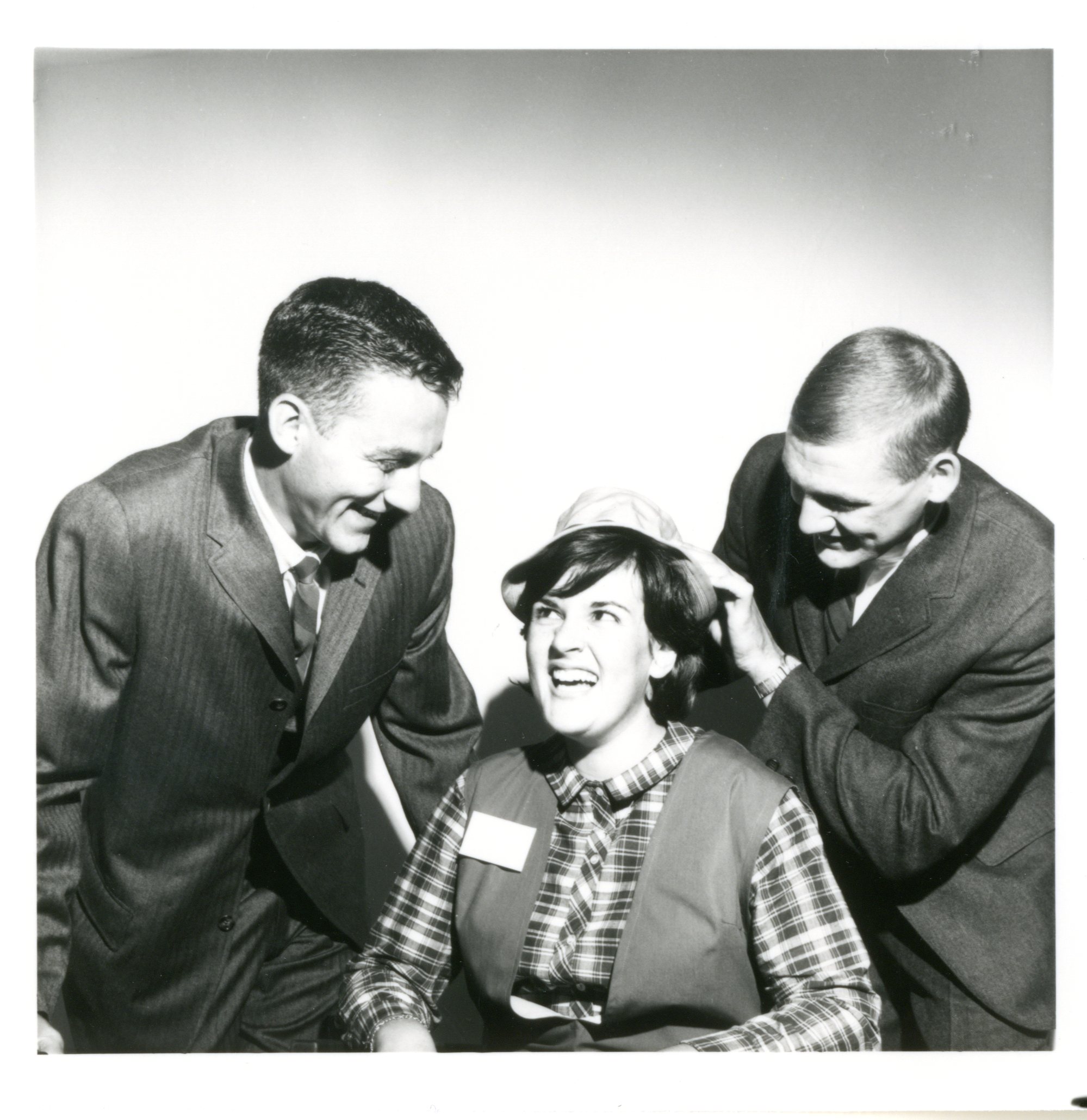
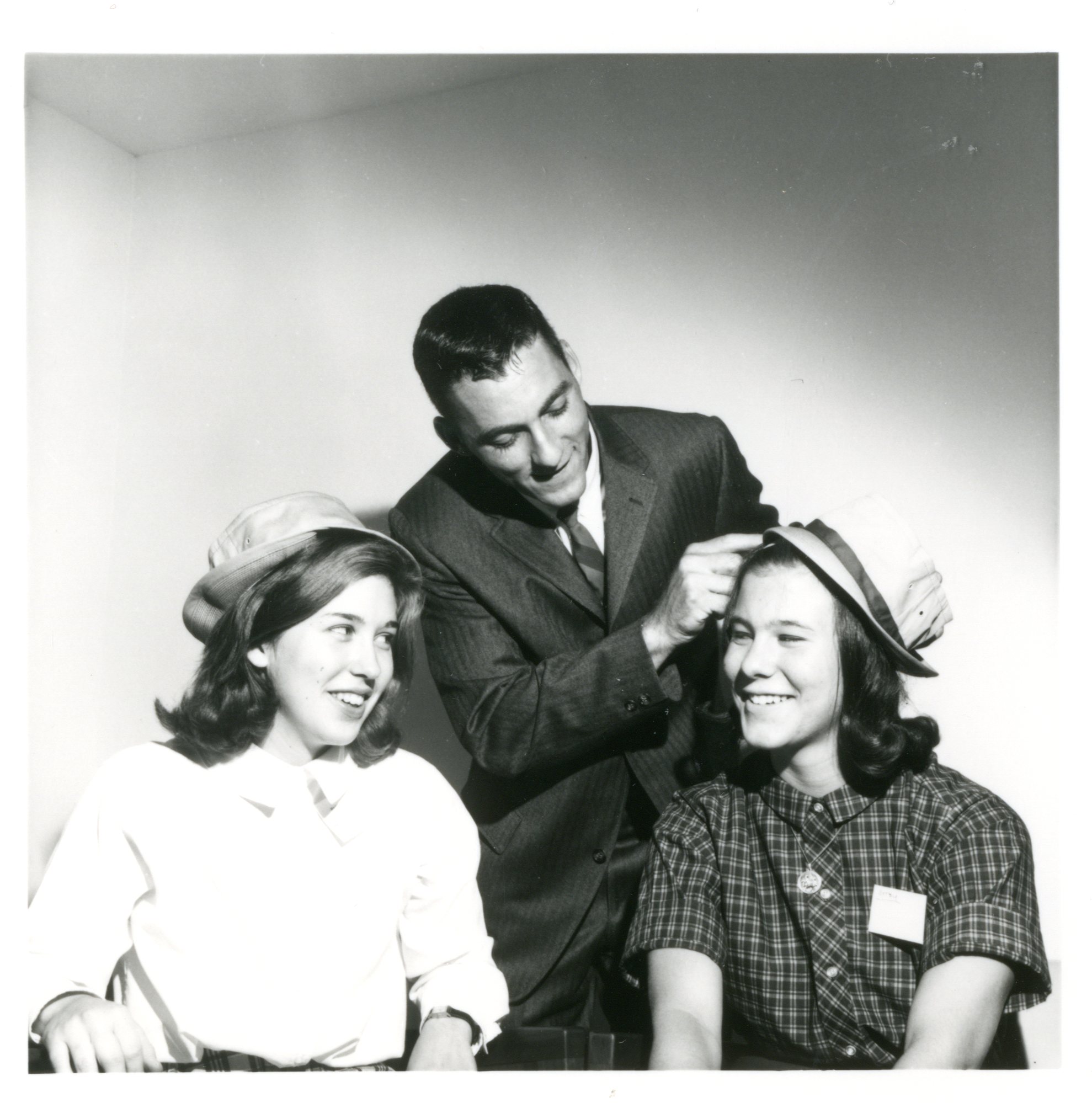
In 1964, after a 57-year break, Clarkson decided to admit women once again. The reasons for Clarkson’s return to coeducation are not completely clear. According to material in Clarkson’s Archives, President William L. Whitson, who was president from 1963 to 1966, persuaded the Board of Trustees that the college should go coed. Likely this decision was due to the levelling off of enrollments in engineering; Clarkson’s desire to expand both the student body and the physical campus; and perhaps the desire of men to have coeds (as female students were called) on campus. Clarkson was typical in going coed at this time; in fact, the decade of the 1960s saw the greatest decline in single-sex colleges in the U.S. Still in the 1960s, students at Clarkson appeared to be white, although statistics about students' racial identity are not readily available. (That Clarkson may have continued to have an entirely (or almost entirely) white student body in the 1960s is not surprising, as the sources linked here and here indicate.)
The first nine young women who enrolled at Clarkson in the fall of 1964 majored in engineering, physics, math, and liberal studies. Since the residence halls were all-male, these women lived in a Victorian house off-campus with a housemother. The early women were called Techettes.
Pictured above are five of the first nine female members from the class of 1968 shown with the sophomore class president, appointed as a “big brother" to protect them. L to r: Karen Politica, Betsy Tiemann, Joyce Bator, Mary Ann Schernau, Jill Schoof, and Paul Pinard. The other four women from the class of 1968 are: Nancy Texido, Andrea Bridge, Catherine Fry, and Grace Channing.